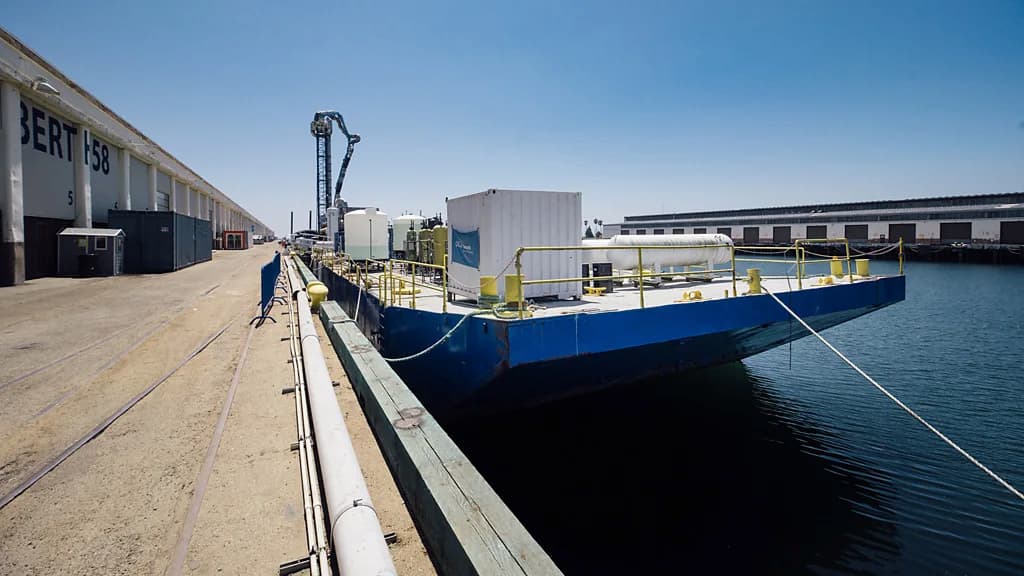
U.S. startup Equatic plans to build the world’s largest ocean carbon removal facility in Singapore. (Photo: Equatic)
The world’s largest ocean-based carbon removal facility is scheduled to begin construction in late September at Tuas Port, Singapore. U.S. startup Equatic, which provides the seawater electrolysis technology, recently closed a Series A funding round backed by Temasek Trust, underscoring investor confidence.
Yet some environmental experts remain cautious, warning that the technology’s impact on marine ecosystems is uncertain and that carbon removal solutions risk reinforcing dependence on fossil fuels.
Boosting ocean carbon uptake while producing clean energy
The pilot project, a collaboration between Singapore’s Public Utilities Board (PUB) and Equatic, uses chemical reactions to enhance the ocean’s capacity to absorb carbon dioxide. By combining CO₂ with minerals such as calcium and magnesium found in seawater, the process mimics shell formation and locks carbon away permanently.
PUB said the facility represents a US$20 million investment and will start by removing one ton of CO₂ per day, with plans to scale up to 10 tons daily—equivalent to the emissions of roughly 870 passenger cars. The process will also generate 300 kilograms of hydrogen per day, offering a clean fuel source for industrial use.
Equatic’s unique technology continues to attract capital. On Aug. 11, the company secured US$11.6 million in Series A funding, led by Temasek Trust’s Climate and Health Catalyst (C3H) and Singapore-based climate-tech investor Kibo Invest. The proceeds will accelerate commercialization and support the development of a 100,000-ton carbon removal facility.
James Marshall, CEO of Kibo Invest, said Equatic’s approach addresses two critical corporate needs: decarbonization and clean energy supply.
Originally slated to start up by late 2024 and reach full operations in 2025, the Tuas demonstration plant has been delayed until the first quarter of 2026. PUB told The Straits Times the facility’s system design requires additional time for completion.
.jpg)
Equatic’s unique technology continues to attract capital. (Photo: Equatic)
Environmental experts fear shifts in ocean pH
Experts caution that the technology could have unintended side effects. Patrick Martin, a marine biogeochemist at Nanyang Technological University, noted that all ocean carbon removal approaches inevitably affect how seawater dissolves CO₂ and may shift its pH balance.
Mary Church, who leads the geoengineering program at the Center for International Environmental Law (CIEL), argued that if ocean carbon removal is scaled to influence climate outcomes, it inherently carries unpredictable consequences—posing unprecedented risks to fragile ecosystems.
She added that carbon removal does not address the root causes of the climate crisis, but instead risks creating a false sense of a quick fix, prolonging fossil fuel dependence and delaying systemic solutions.
In response to these concerns, Equatic emphasized that its operations will feature real-time monitoring and regular testing to ensure compliance with environmental standards.
Source: The Straits Times, BBC, Equatic
.jpg)





